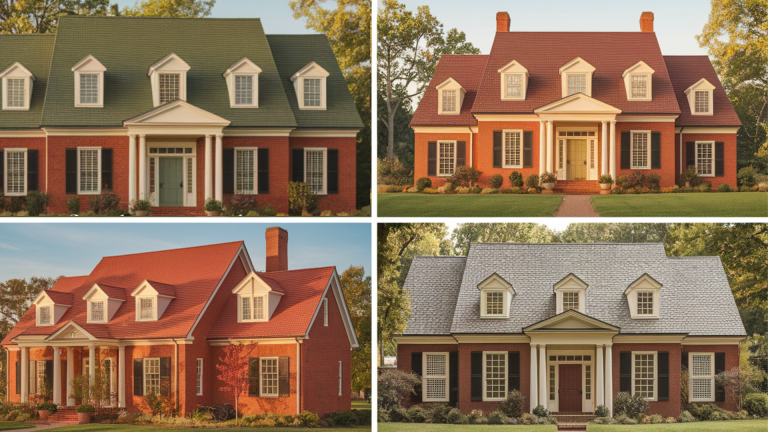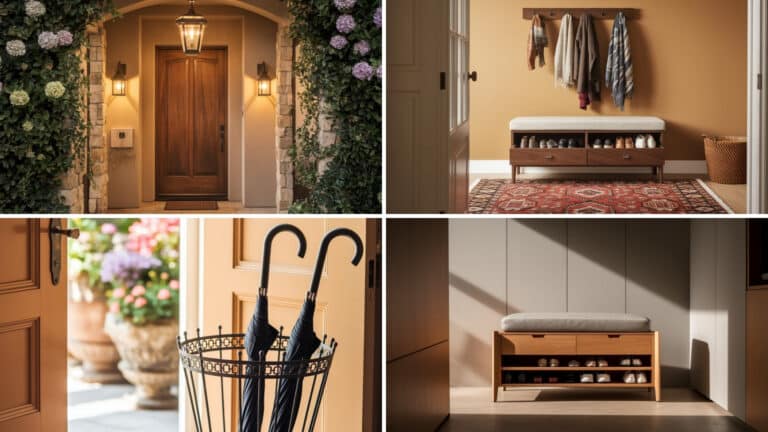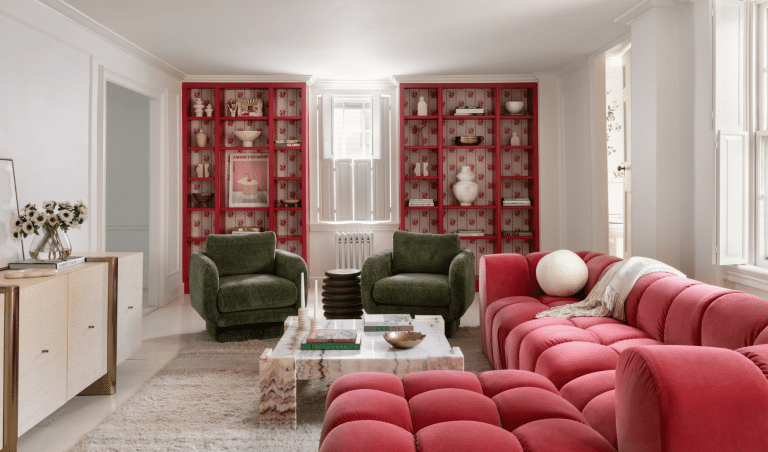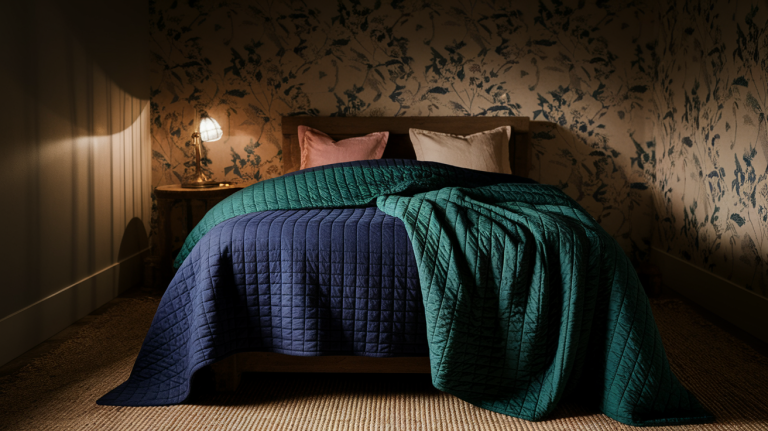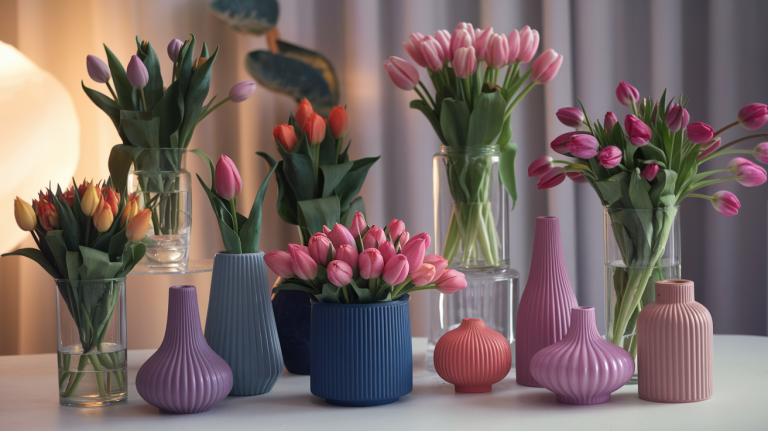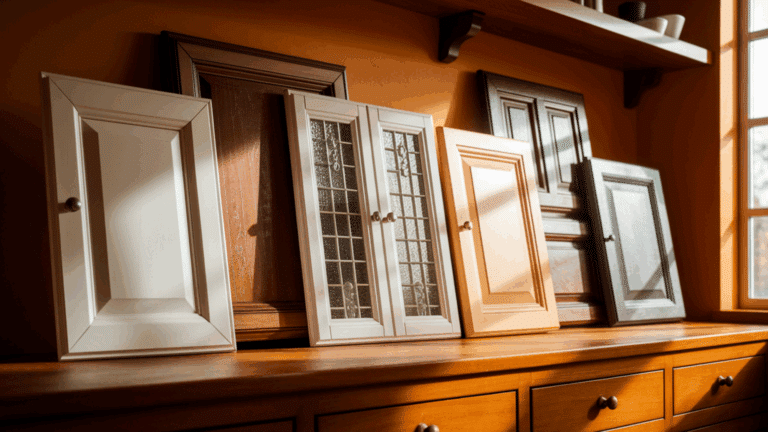What Is Oak Veneer Real Wood Types Uses and Pros Cons
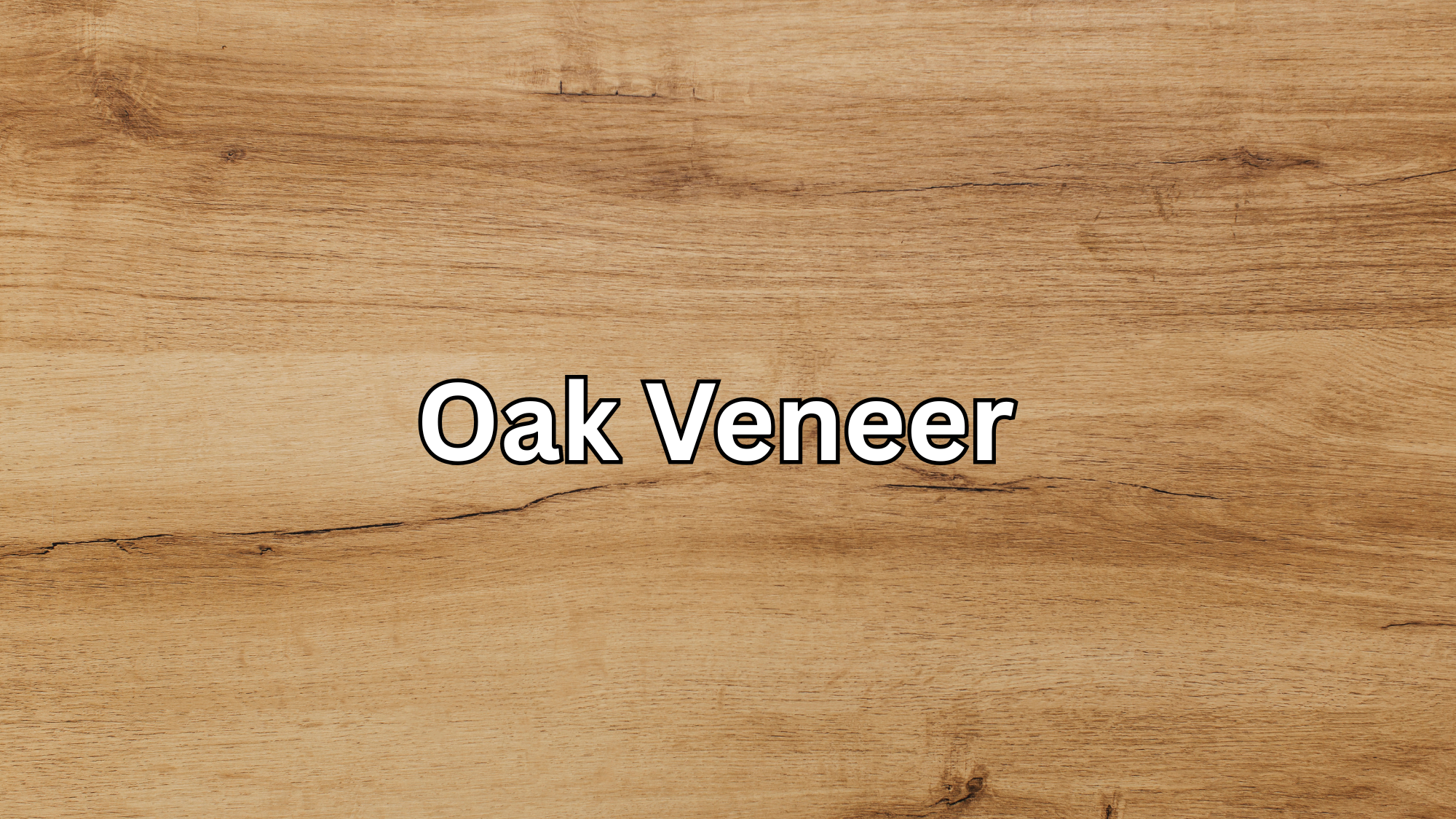
Oak veneer brings the beauty of solid oak to furniture without the hefty price tag. This thin layer of real oak wood gets bonded to less costly materials, giving you the look of oak at a fraction of the cost.
This Veneer matters in woodworking and furniture-making because it offers the warm, natural grain patterns that people love about oak while being more affordable and easier to work with.
The thin sheets allow for creative designs that might be impossible with solid wood. For home builders and furniture makers, oak veneer offers practical benefits and visual appeal.
In this blog, we’ll look at the different types of oak veneer, weigh their good and bad points, and learn common uses in today’s homes and buildings.
What is Oak Veneer
Oak veneer is a thin slice of real oak wood, usually about 1/42 of an inch thick. These slices are cut from oak logs using special machines that peel, slice, or saw the wood into sheets.
The thin sheets are then stuck onto a base material to create the final product. The core materials for oak veneer often include particleboard, medium-density fiberboard (MDF), or plywood.
Particleboard consists of wood chips and sawdust pressed together with glue. MDF is made from wood fibers mixed with wax and resin under heat and pressure.
Plywood uses multiple layers of wood sheets glued together. Most oak veneer products use strong adhesives to bond the veneer to the core.
This process happens under high pressure to ensure a tight bond. The final step involves sanding and finishing the surface to bring out the natural grain of the oak.
Types of Oak Veneer
When choosing oak veneer, it’s helpful to understand the different types available. The way oak veneer is cut has a big impact on its appearance and performance.
Here’s a closer look at the common cutting methods and their unique characteristics. The different veneer species of oak, along with their specific cuts and grain patterns, each offer their distinctive look and benefits.
1. Red Oak Veneer
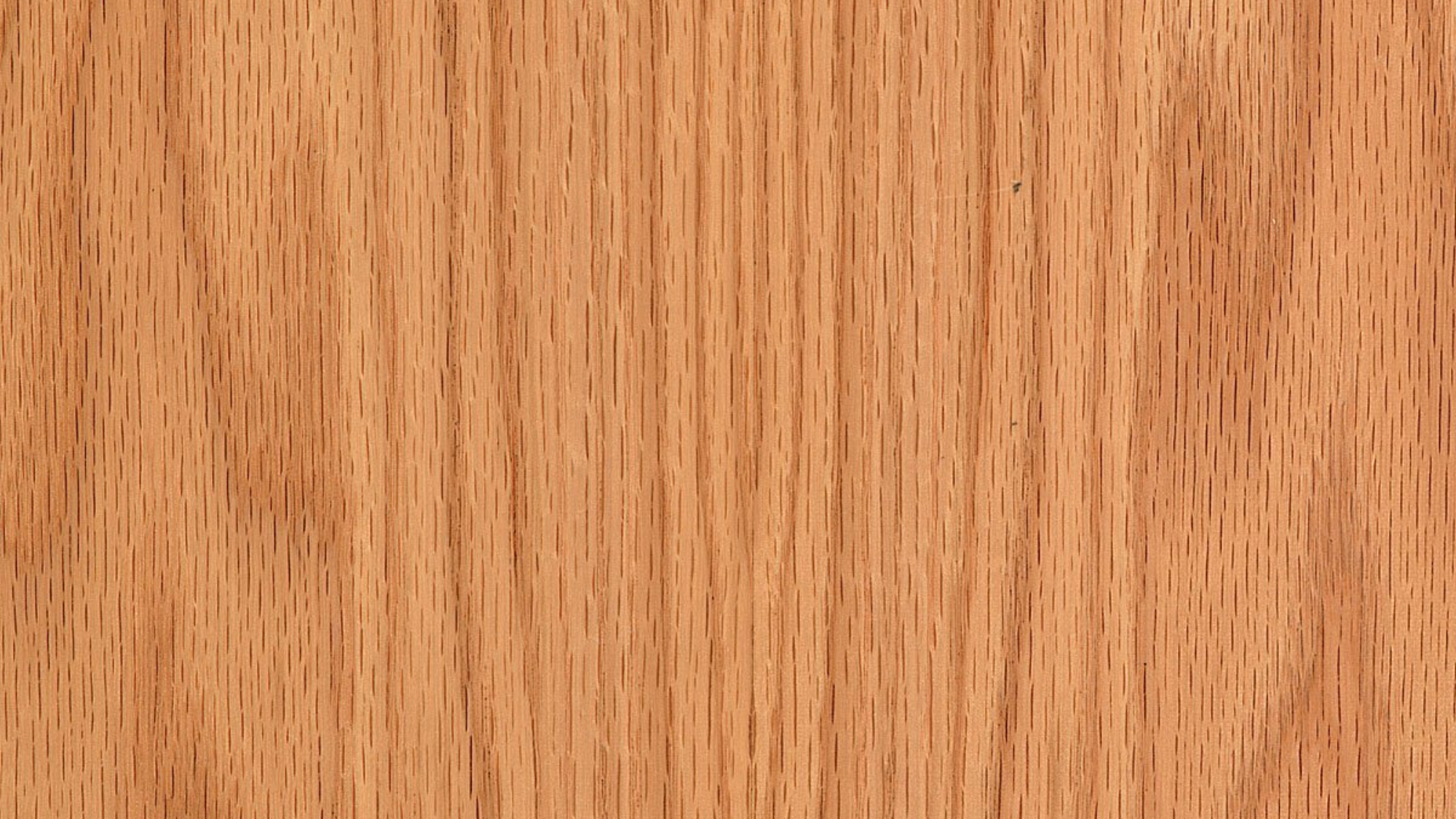
Red oak veneer is a popular choice for its warmth and affordability. Known for its bold, natural charm, this veneer adds a welcoming touch to any space.
- Color & Appearance: Red oak veneer shows a warm, pinkish-brown to reddish tone that stands out in any room.
- Grain Pattern: The grain is strong and open, with notable rays and flecks that give character.
- Finishing: Takes stain very well, making it easy to match with other wood furniture or finishes.
- Affordability: Typically more affordable than white oak veneer.
- Common Uses: Perfect for cabinets, doors, and furniture where a rich color is desired.
2. White Oak Veneer
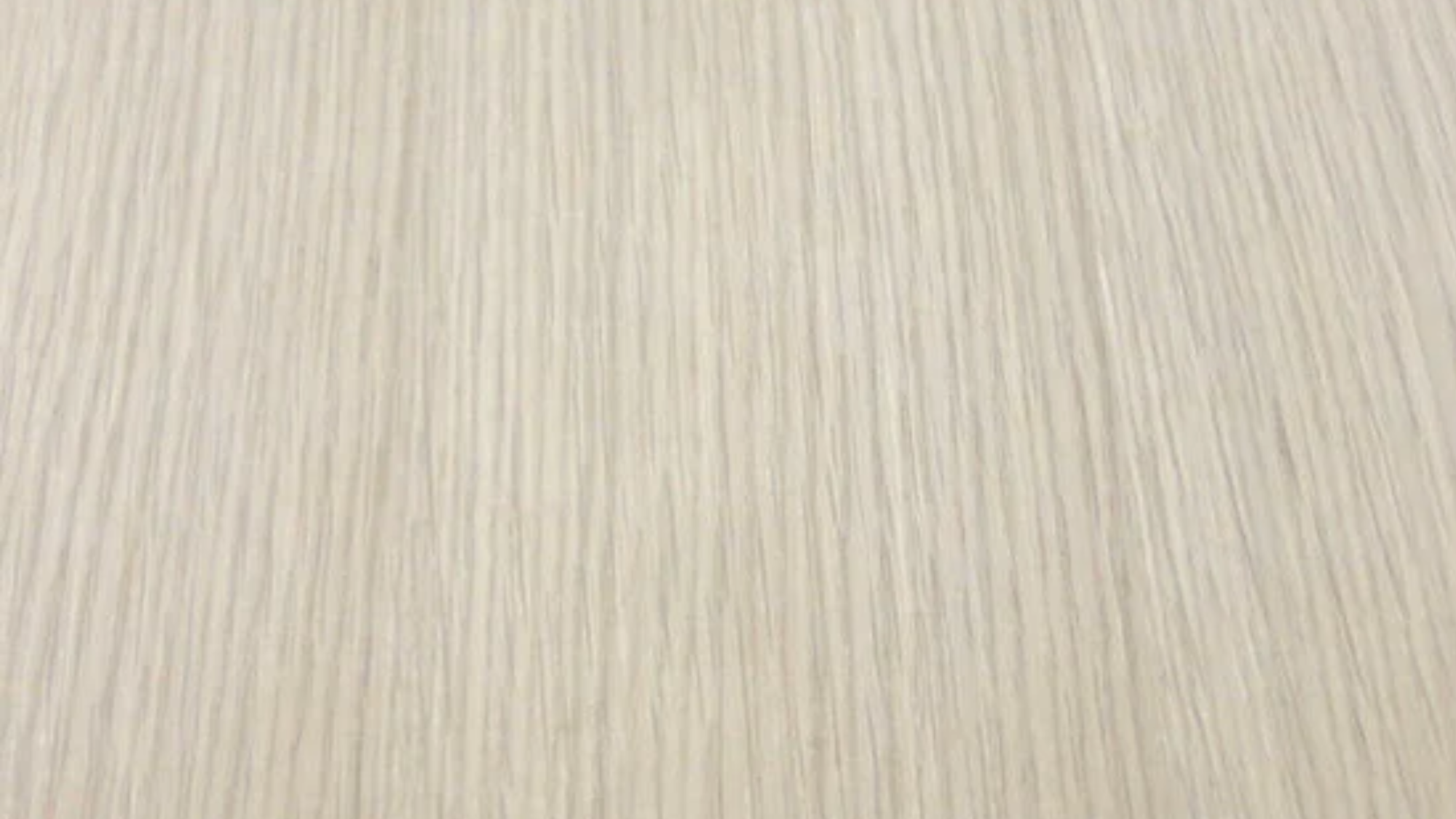
White oak veneer is valued for its sleek, modern appeal and higher durability. If you’re looking for something subtle yet stylish, white oak might be the way to go.
- Color & Appearance: Light tan to grayish-brown color that feels clean and modern.
- Grain Pattern: Tighter, straighter grain with fewer pores compared to red oak.
- Durability: It offers better water resistance, making it suitable for kitchens and bathrooms.
- Trend Factor: Very popular in recent years for its understated, natural look.
- Pricing: Slightly higher cost than red oak, but it is worth it for the added durability.
3. Flat-cut Oak (Plain-sawn)
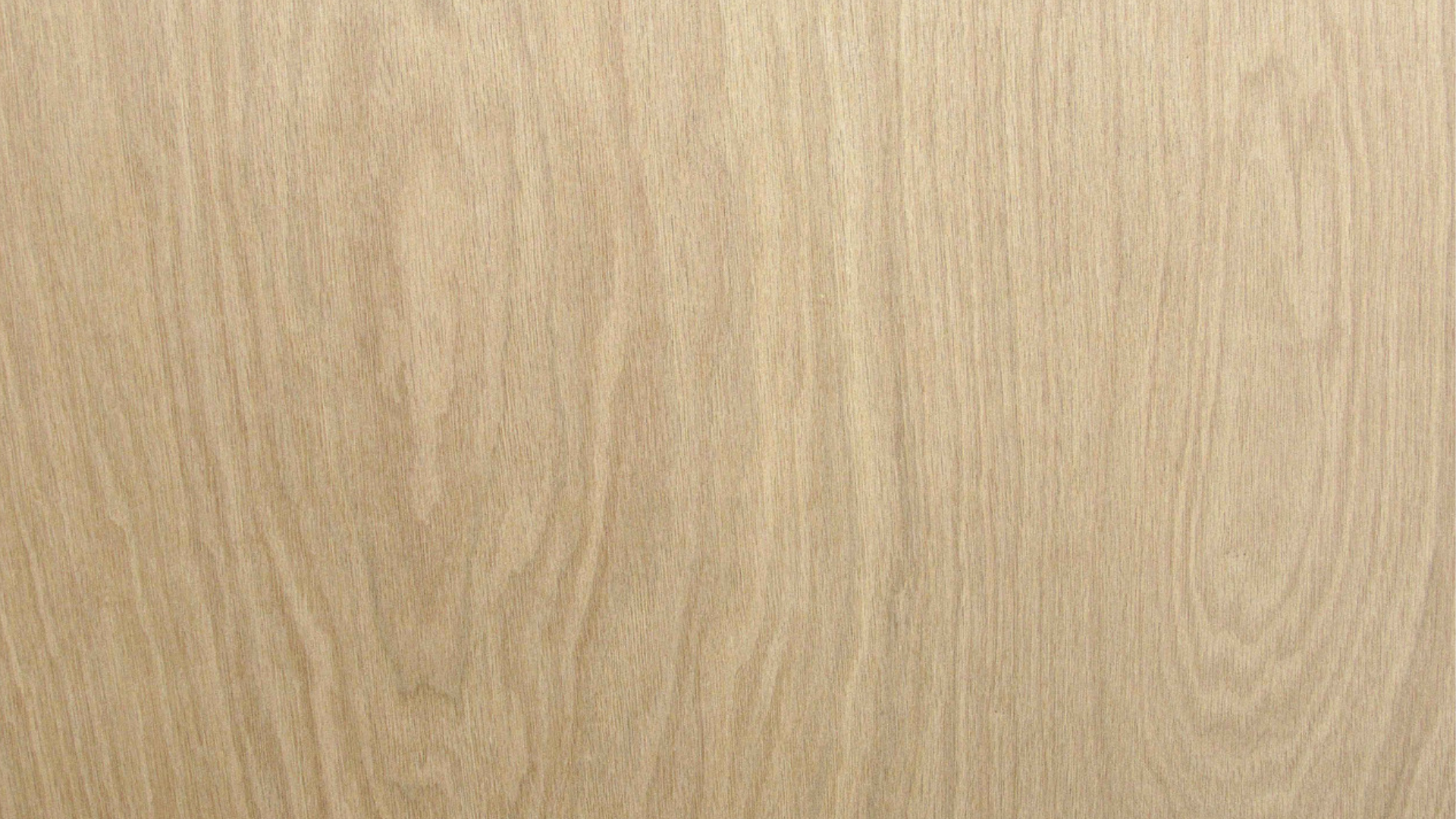
Flat-cut oak veneer is the most common and budget-friendly option. It provides a traditional wood appearance with a varied, natural pattern.
- Pattern: Wavy, varied grain patterns that highlight the natural beauty of the wood.
- Cutting Method: Made by cutting the log parallel to the growth rings.
- Aesthetic Appeal: Offers a classic wood look that suits many design styles.
- Affordability: Typically the most affordable cutting method.
4. Quarter-sawn
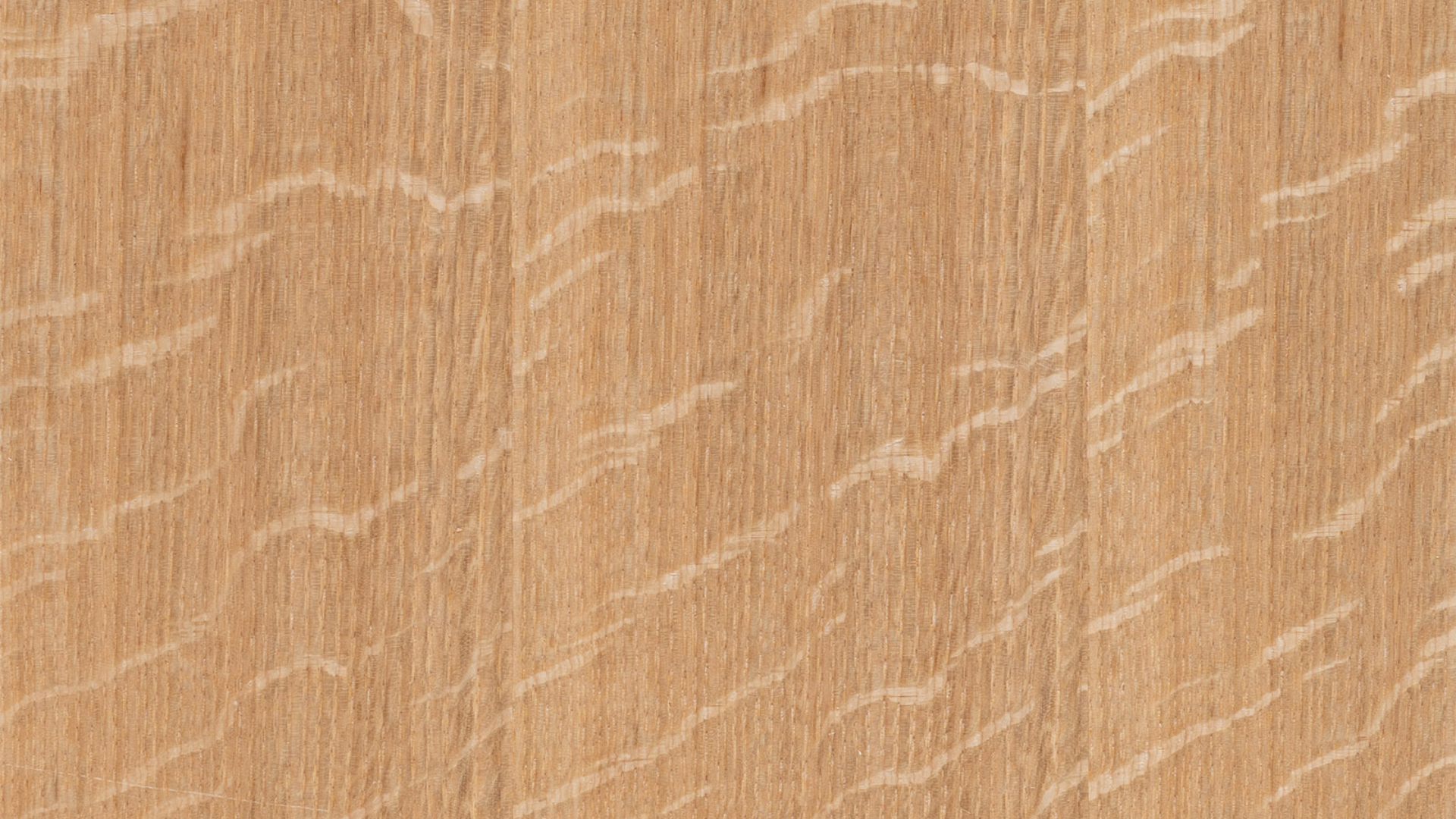
Quarter-sawn veneer offers a distinct, linear look with excellent stability. It’s a favorite among woodworkers for its refined appearance.
- Pattern: Straight grain lines with unique flecks and ribbons.
- Cutting Method: The Log is cut at a 90-degree angle to the growth rings.
- Performance: More stable than flat-cut, with less risk of warping.
- Pricing: Usually costs more due to the more complex cutting process.
5. Rift-cut
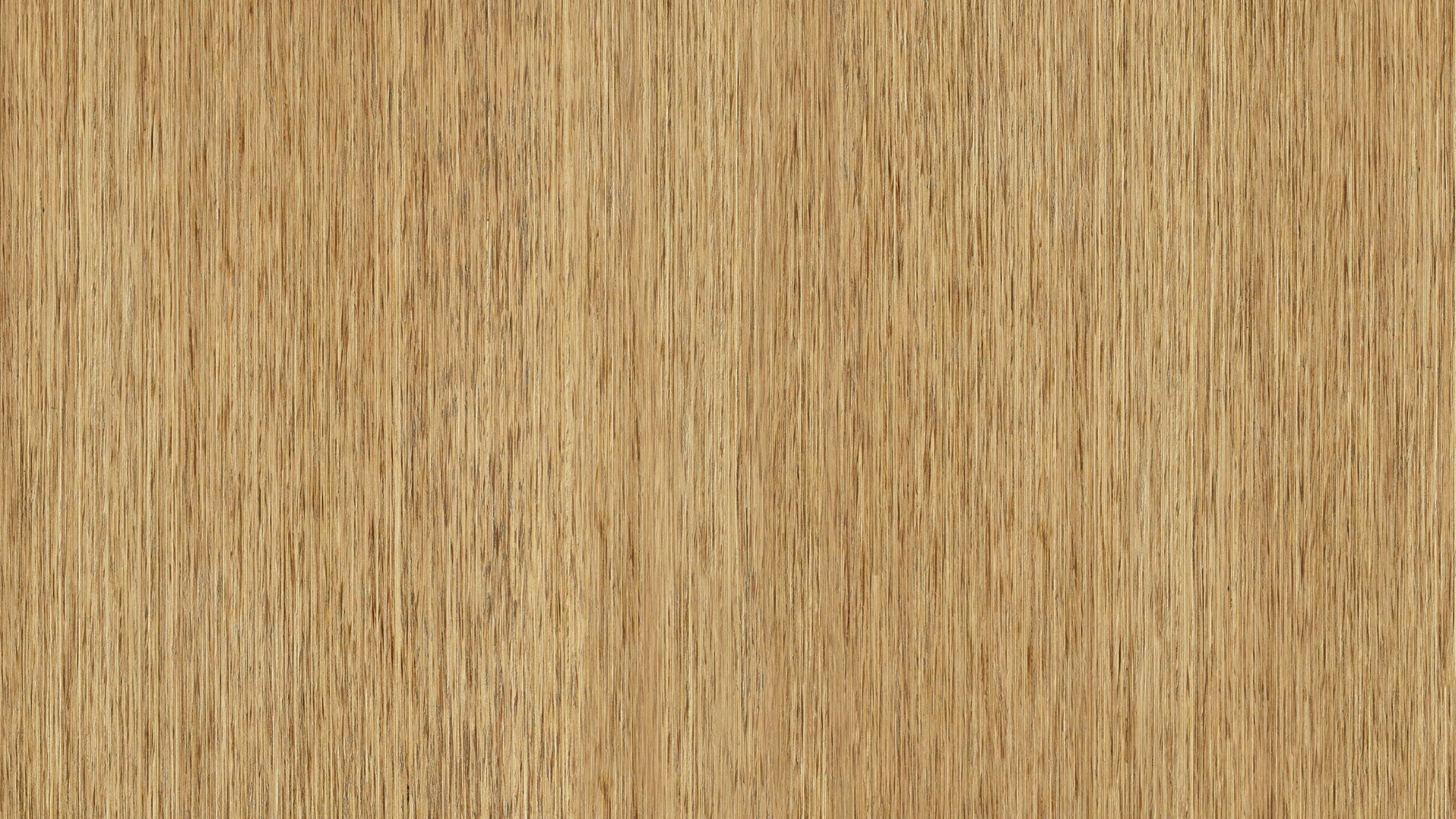
Rift-cut veneer is prized for its ultra-consistent and clean appearance. It’s often used in contemporary designs for its sleek, uniform look.
- Pattern: Extremely straight and consistent grain, with minimal flecking.
- Cutting Method: Cut at a 30–45 degree angle to the growth rings.
- Design Preference: Ideal for modern, minimalist spaces where grain uniformity is desired.
- Pricing: The most expensive option due to high material waste during production.
Specialty Oak Veneers: Smoked Oak and Dyed Oak
Beyond traditional cut methods, specialty treatments create unique aesthetic options. Smoked oak veneer undergoes a fuming process that darkens the wood naturally, creating rich brown tones without stains. This real wood treatment penetrates the thin oak surface deeply, resulting in a sophisticated finish popular in luxury interiors. Dyed oak offers even more creative freedom, allowing manufacturers to achieve colors from deep blacks to vibrant hues while maintaining the wood’s natural grain pattern. These wood veneer options expand design possibilities beyond standard oak finishes.
Oak Veneer vs Solid Oak: Which Should You Choose
| Factor | Oak Veneer | Solid Oak |
|---|---|---|
| Cost Comparison | 50-70% cheaper than solid oak. | Significantly more expensive due to raw material and labor costs. |
| Example: Dining table costs $500–800. | Example: A solid wood dining table costs $1,500–2,500. | |
| Core materials like MDF or plywood reduce costs. | Requires more skilled craftsmanship and solid timber. | |
| Durability and Longevity | Lasts around 10–20 years with care. | It can last for generations with proper maintenance. |
| Prone to chipping or peeling, especially on edges. | Highly durable, can withstand heavy use and high-traffic areas. | |
| It cannot be sanded and refinished multiple times. | It can be refinished and repaired multiple times over its life. | |
| Appearance and Finishing | Consistent grain pattern, ideal for matching large surfaces. | Natural variation in grain, offering unique character in every piece. |
| Takes stain and finishes well, but limited sanding potential. | It can be stained and refinished repeatedly for different looks. | |
| Offers controlled design options, great for matching sets. | Offers organic beauty with natural imperfections. |
Applications and Uses of Oak Veneer
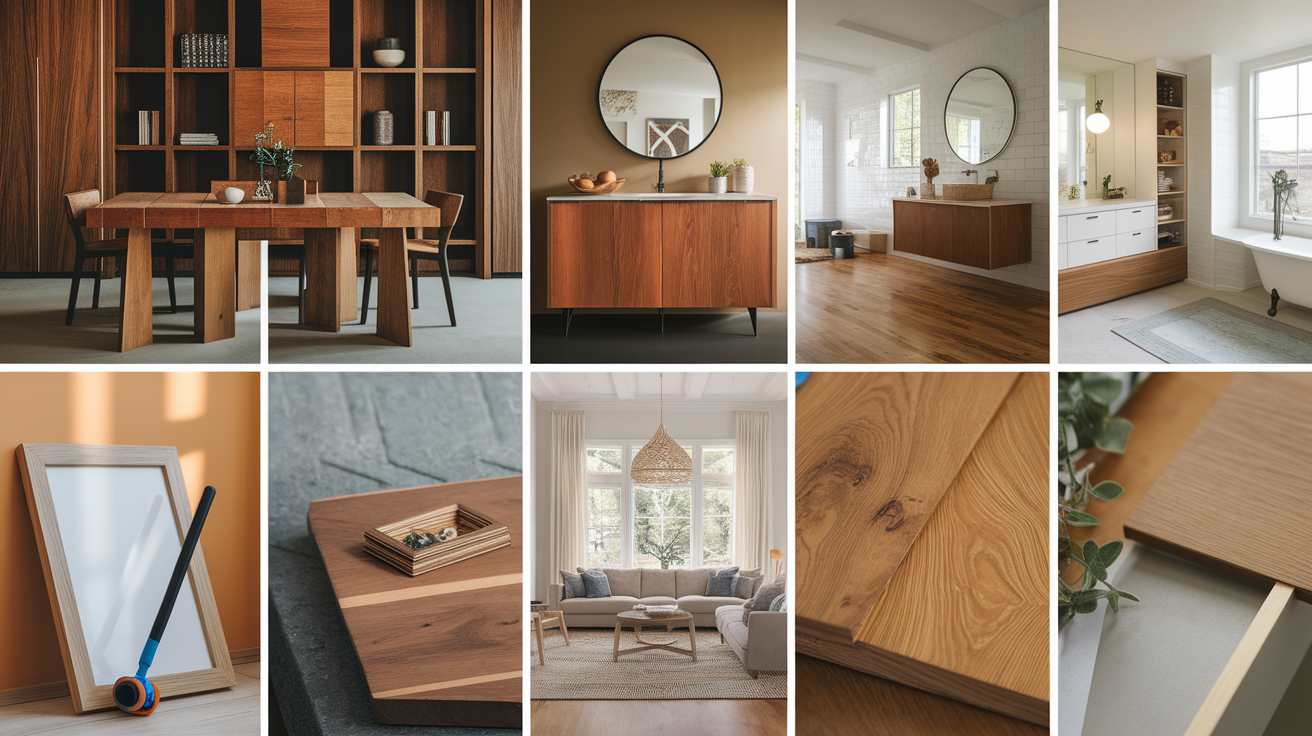
Oak veneer offers a durable and stylish woodgrain finish and is ideal for furniture making, cabinetry, and wall paneling.
It’s also used for decorative accents, tabletops, and DIY projects like boxes or picture frames.
1. Furniture
Oak wood veneer is commonly used in tables, desks, and cabinets to achieve a cost-effective classic look, while entertainment centers and bookcases benefit from its lighter weight.
Bedroom sets and dining furniture showcase matched-grain patterns for a cohesive look, and office furniture combines a professional appearance with budget-friendly construction.
2. Cabinetry
It is a popular choice for kitchen cabinets and bathroom vanities. It offers warmth and moisture resistance at a lower cost.
It also works well for built-in storage, wardrobes, and media centers, providing an attractive oak finish while keeping expenses down.
3. Flooring
Engineered oak flooring uses a veneer top layer for an authentic oak wood look, while floating floor systems offer easier installation than traditional hardwood.
Properly sealed veneer flooring suits areas with minor moisture and adapts well to rooms with temperature changes.
4. DIY Woodworking
Small projects like boxes and picture frames are ideal starter veneer projects, as veneer sheets can be cut with basic tools, making them accessible to hobbyists.
Cabinet refacing gives new life to old kitchens at a fraction of replacement costs, while decorative inlays and edge banding offer custom looks and polished finishes without advanced woodworking skills.
Advantages vs. Disadvantages of Oak Veneer
| Advantages | Disadvantages |
|---|---|
| Aesthetic AppealNatural oak look with varied finishes and matched grain patterns. | Damage-ProneThin surface can chip, peel, or bubble from water or heat. |
| AffordableCosts less than oak solid furniture, ideal for budget-conscious projects. | Repair DifficultyHard to fix without visible patches; requires skill. |
| Stable & VersatileResists warping, suits humid areas, and fits curved designs. | Shorter LifespanLasts 10–20 years vs. decades for solid oak; prone to delamination. |
| Eco-FriendlyEfficient use of oak wood, reduces waste and conserves resources. | Inconsistent QualityDurability varies depending on the manufacturer. |
Maintenance and Care Tips
Proper maintenance ensures that your oak veneer remains beautiful and durable over time. Follow these simple care guidelines to protect and extend the life of your veneer surfaces.
- Cleaning Routine: To clean veneer properly, use a soft, damp microfiber cloth for gentle dusting while avoiding excess water that could weaken the adhesive bond.
- Protection Practices: To protect the oak veneer, always use coasters and felt pads to prevent water rings, heat marks, and scratches. Keep it out of direct sunlight to avoid fading.
- Polishing and Conditioning: For optimal care, apply wood-specific furniture polish every 2-3 months using a soft cloth (never spray directly), buffing gently with the grain.
- Repair Strategies: For minor veneer damage, use wood markers for scratches and clear nail polish for chips, while deeper gouges can be filled with stained wood putty.
- Long-term Preservation: For lasting protection, reapply a clear polyurethane sealant every few years while routinely inspecting edges for wear. Maintain stable indoor temperatures to minimize wood movement.
Conclusion
Oak veneer offers a practical middle ground for those who love the look of oak but need to watch their budget. It brings the beauty of natural wood grain into homes at a lower cost than solid oak.
While veneer will not last for generations like solid wood, proper care can extend its life for many years. The choice between veneer and solid oak depends on how the furniture will be used, budget limits, and long-term plans.
For many homes, oak veneer makes perfect sense in most rooms. With good care habits like using coasters, cleaning spills quickly, and keeping furniture out of direct sunlight, oak veneer can stay looking fresh and attractive.
The options, styles, and finishes available make oak veneer a smart choice for today’s homes. Whether you choose reconstituted oak for consistent patterns, backed oak for stability, or composition oak for modern designs, these veneers offer endless possibilities. Even reconstituted options provide the authentic oak wood appearance that complements both traditional and contemporary interiors.

